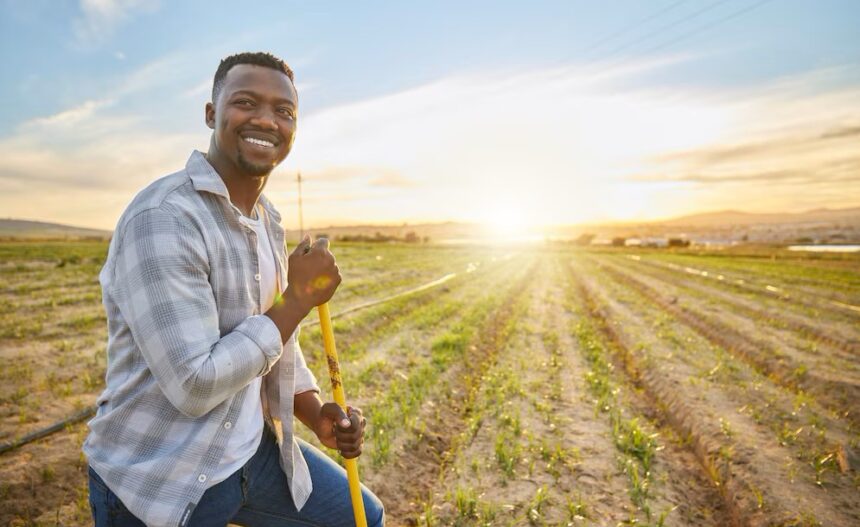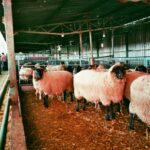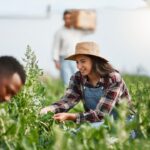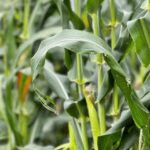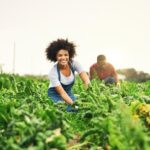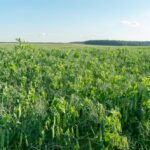Climate change is one of the most pressing issues facing agriculture today, with far-reaching consequences for farmers, food security, and global supply chains. By 2030, the effects of a warming climate will become even more pronounced, posing new challenges and requiring innovative solutions to ensure food production remains sustainable. From altered weather patterns to shifting growing seasons, farmers will need to adapt quickly to navigate the complexities of climate change.
In this article, we explore the projected impact of climate change on farming by 2030 and the strategies farmers can adopt to mitigate its effects and safeguard their livelihoods.
1. Changing Weather Patterns and Extreme Weather Events
One of the most immediate effects of climate change on agriculture will be the increase in extreme weather events. In the coming years, farmers can expect to see:
- More frequent and intense droughts: As temperatures rise, regions that are already prone to drought conditions will experience even more prolonged dry spells. This will lead to water shortages, impacting crop irrigation, livestock water supply, and overall soil health.
- Heavier rainfall and flooding: In some areas, increased rainfall will lead to flooding, eroding soil and damaging crops. For farmers who rely on rain-fed agriculture, inconsistent rainfall patterns could significantly reduce crop yields.
- More frequent heatwaves: Rising temperatures and heatwaves can cause crops to wilt, especially during critical growing periods, reducing productivity and increasing water demand.
Adaptation Strategy: To cope with these changes, farmers will need to implement more resilient farming practices. This includes adopting drought-tolerant crops, improving water management techniques, and using technology like climate-resistant irrigation systems.
2. Shifting Growing Seasons and Crop Yields
As global temperatures continue to rise, crop growth will be affected by shifts in growing seasons and changing temperature patterns.
- Earlier or delayed planting seasons: In some regions, warmer winters could lead to earlier planting seasons, while in others, heat stress during key planting months might delay sowing. This could cause a mismatch between crops and optimal growing conditions.
- Decreased yields for sensitive crops: Many staple crops such as maize, wheat, and rice are highly sensitive to temperature changes. Even small shifts in temperature can result in a decline in yields. For instance, heat stress during flowering can cause pollination failure in crops like maize and wheat, leading to lower productivity.
Adaptation Strategy: Farmers may need to adjust planting dates, switch to more climate-resilient crop varieties, or diversify their crops to minimize the risks associated with crop failure. Additionally, investing in advanced technologies, like precision agriculture, can help optimize growing conditions and improve yield predictions.
3. Water Scarcity and Irrigation Challenges
Water is a critical resource for agriculture, and as climate change accelerates, water availability will become increasingly unpredictable.
- Decreased water availability: With more frequent droughts and shifting precipitation patterns, many regions may experience a decline in available water for irrigation. This will be particularly problematic for regions that depend heavily on irrigated farming.
- Decline in groundwater reserves: Over-reliance on groundwater for irrigation, particularly in arid regions, may result in the depletion of aquifers, further exacerbating water scarcity.
Adaptation Strategy: Farmers will need to invest in efficient water management systems such as drip irrigation and rainwater harvesting. Additionally, adopting water-saving techniques like mulching, cover cropping, and soil conservation can help retain moisture and improve soil health.
4. Soil Degradation and Erosion
Climate change is expected to accelerate soil erosion and degradation, which will directly impact crop productivity and the sustainability of farming practices.
- Increased soil erosion: Extreme rainfall events and heavy storms will cause soil erosion, reducing the fertile topsoil necessary for growing crops. This will lead to declining soil quality and increased difficulty in maintaining soil fertility.
- Depletion of soil nutrients: Higher temperatures and altered rainfall patterns can affect nutrient cycling in soils, leading to nutrient imbalances that can further reduce crop yields.
Adaptation Strategy: To combat soil erosion and degradation, farmers will need to adopt sustainable farming practices such as no-till farming, agroforestry, and crop rotation. Implementing cover crops and maintaining buffer zones along water bodies can also help prevent soil erosion.
5. Pests and Disease Proliferation
As temperatures rise, the risk of pest and disease outbreaks will increase, threatening both crop and livestock health.
- Longer growing seasons for pests: Warmer temperatures will enable pests like insects, fungi, and bacteria to thrive, leading to increased crop damage and higher reliance on pesticides.
- Spread of new pests and diseases: Climate change can also lead to the spread of pests and diseases into new areas, as warmer temperatures expand the geographical range of certain pathogens and vectors.
Adaptation Strategy: Farmers will need to adopt integrated pest management (IPM) strategies that focus on prevention, monitoring, and control. This includes using biological control methods, diversifying crops to reduce pest pressure, and choosing resistant varieties of plants and animals.
6. Impact on Livestock Farming
Livestock farmers will face several challenges due to climate change, particularly with regards to heat stress, water scarcity, and forage availability.
- Heat stress on animals: Increased temperatures will make it harder for livestock to regulate their body temperature, leading to reduced productivity, lower milk yields, and increased mortality rates.
- Reduced forage quality and availability: Changes in rainfall patterns and growing seasons will affect the availability and quality of pasture, impacting grazing animals’ nutrition.
Adaptation Strategy: Livestock farmers can mitigate heat stress by providing shade, improving water access, and adjusting feeding practices. Additionally, selecting heat-resistant breeds and diversifying animal species can help improve resilience to changing climate conditions.
By 2030, the effects of climate change will be felt across every facet of farming, from crop yields to water availability, soil health, and pest management. However, with the right strategies in place, farmers can mitigate many of these challenges. Embracing sustainable practices, investing in technology, and focusing on resilience will be key to ensuring that agriculture continues to thrive in a rapidly changing climate.
Farmers who start planning now and adopt climate-smart practices will not only secure their livelihoods but also contribute to global food security in the face of climate uncertainty.
Join 'Farmers Mag' WhatsApp Channel
Get the latest Farming news and tips delivered straight to your WhatsApp
CLICK HERE TO JOIN
